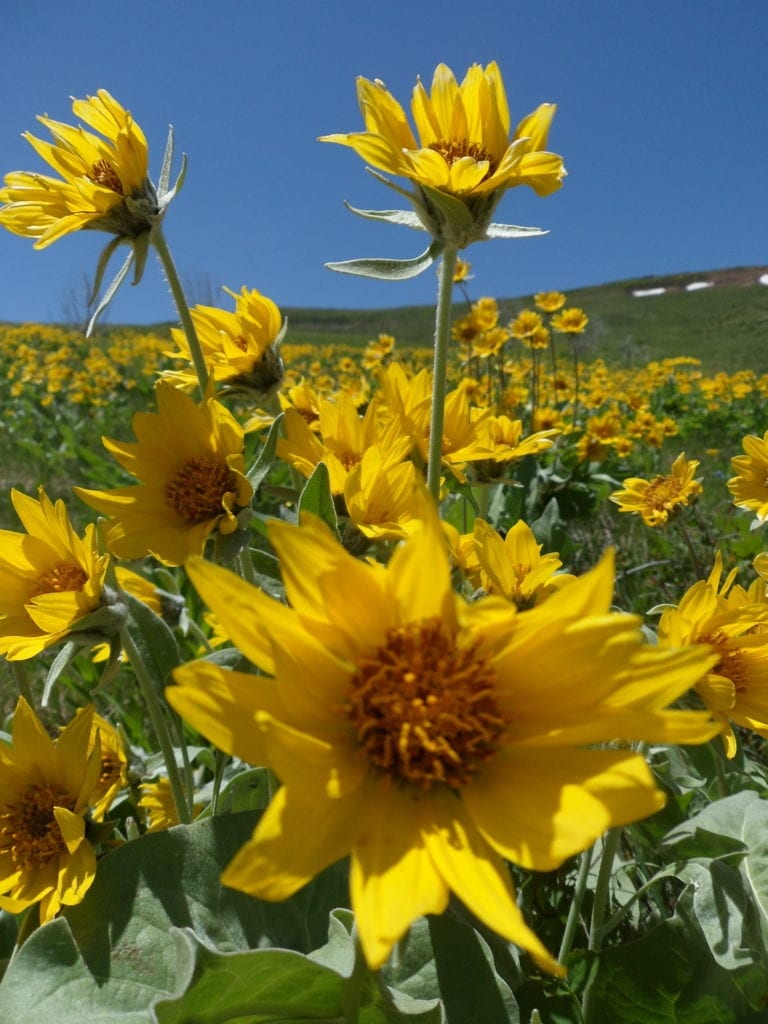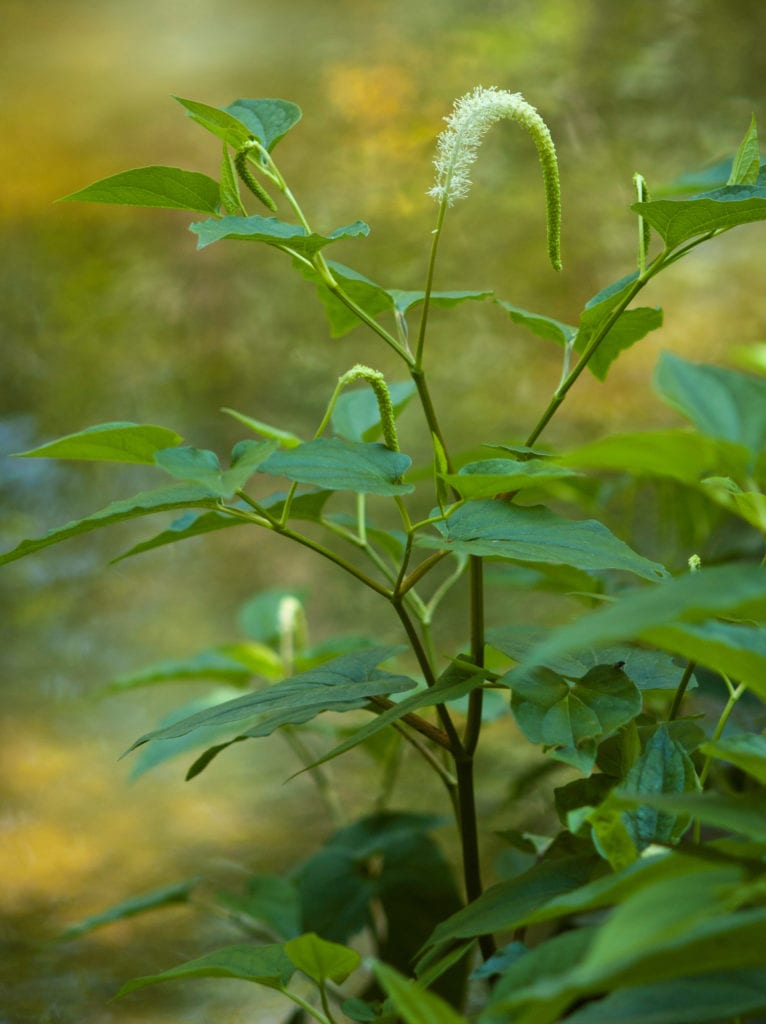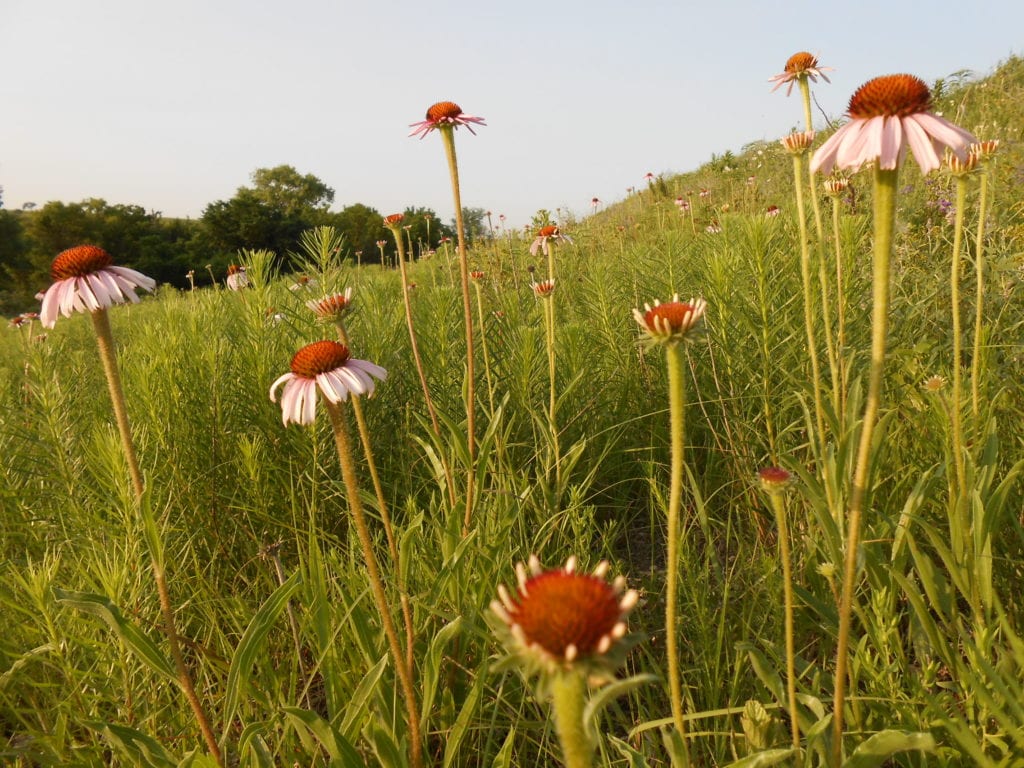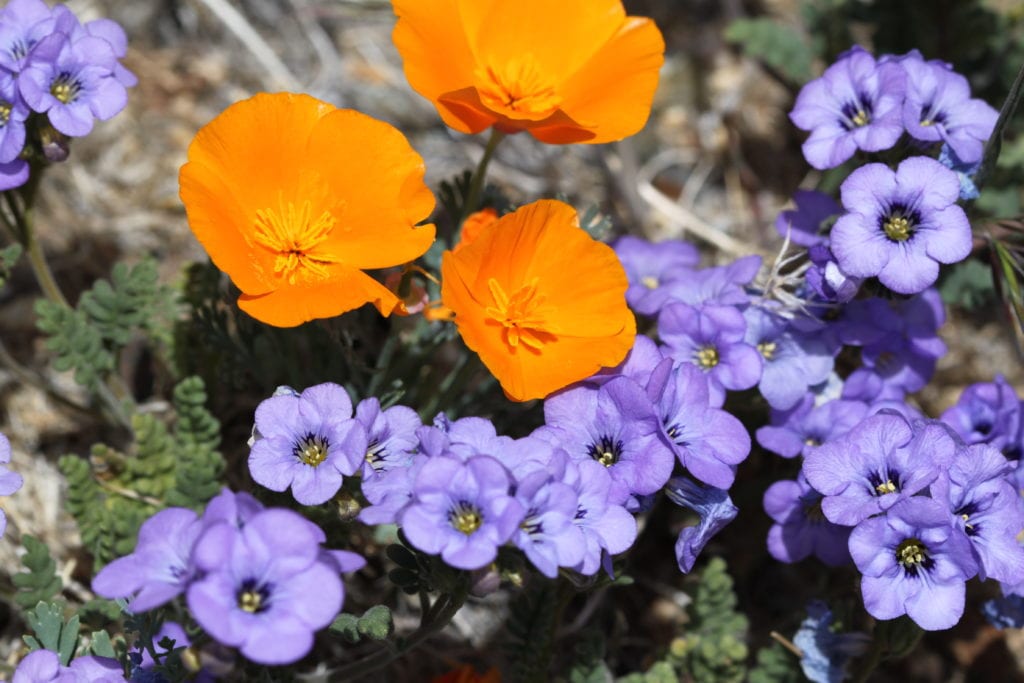by Peggy Olwell
The United States has a rich native flora of over 18,000 native plant species. Plants color our distinctive and inspirational landscapes and provide a multitude of ecological goods and services. Native plants continue to provide new material for domestic gardens and urban spaces. Increasingly naturalistic planting schemes draw on the rich palette of native species combined with plants from elsewhere in the world to create robust and attractive designed plant communities. But there is a problem. American native plant seed is in short supply. Current production does not meet the growing demand.

The arrowleaf balsamroot (Balsamorhiza sagittata) is an excellent species for pollinators and other wildlife in the Great Basin. Photo: BLM WY040, Seeds of Success
The greatest use of native plant materials is in ecological restoration. Federal agencies are major buyers of native seed for rehabilitation and restoration as part of rangeland management and for restoration following wildfires. The Bureau of Land Management (BLM) alone purchases an average of 3 million pounds of seed each year. Increasingly the response to extreme weather events and emergency preparedness calls for stocks of native seed for use in building ecological resilience in coastal and other vulnerable ecosystems. Recent national initiatives such as the Presidential Memorandum on Pollinators mandate the use of appropriate native seed including a wider range of forbs on which pollinators depend.
Coordinating a Reliable Native Seed Supply
Action to address the supply of native seed began in a coordinated way in 2000. The critical shortage of native plant materials available for seeding following the extensive wildfires in that year and the previous year led Congress to direct the BLM and Forest Service to develop a stable and economical supply of native plant materials for public lands (House Interior Appropriations Conference Report 106-914). The Forest Service and BLM responded by establishing the Native Plant Restoration Program and the Native Plant Materials Development Program. The immediate aims were to increase the availability of diverse native plant materials and to foster more efficient management of the supply.
The results over the past sixteen years have been impressive. The BLM and its partners in Seeds of Success have collected and stored more than 18,000 seed collections representing over one quarter of the native flora of the United States. BLM Plant Conservation Program has engaged a wide range of organizations across the country to provide botanical training at a time of declining skills and has helped to foster a broader interest in native plants. In addition, BLM and its partners have made over 200 native plant species commercially available and developed germination and propagation protocols for more than 3,000 native plant species.
Strategizing to Meet Increased Demand
Major challenges remain however. Whereas seed of common native grasses has long been grown agriculturally, production of native forb seed is a recent priority with more research needed to develop appropriate cultural practices for individual species. In general there is a need to scale up and diversify native seed collection and to stimulate native seed production on a commercial scale. Specialist plant nurseries and growers with their unique skill sets have an extremely important role to play.

Native to the Eastern U.S., lizard’s tail has fragrant flowers and foliage and, according to the Ladybird Johnson Wildflower Center, can withstand saturated soils of up to 4 inch inundation. Photo: Chicago Botanic Garden, Seeds of Success.
Action to increase the supply of native seed is now being coordinated through an exciting and ambitious new initiative – the National Seed Strategy. Launched in August 2015, this builds on the work of the BLM and Forest Service and has been developed by a diverse coalition of Federal, Tribal, and State agencies; nongovernment organizations; and the private sector. The mission of the Strategy is to ensure the availability of genetically appropriate seed reserves to restore viable and productive plant communities and sustainable ecosystems.
The National Seed Strategy
The National Seed Strategy has four goals relating to increased and reliable availability of genetically appropriate seed reserves: undertaking research and improving technologies for seed production and use, developing tools for land managers, and ensuring good communication.
An important first step in implementation of the Strategy is a National Assessment to analyse the needs and capacity of the United States. This will provide a much clearer national picture of native plant production and gaps in availability whether in the Great Basin, Mojave Desert, or coastal areas affected by the increasing impacts of hurricanes. Using the results of the Assessment, a national network of native seed collectors, researchers, farmers, growers, nurseries, seed storage facilities, and restoration ecologists will be established with expertise to ensure how to plant the right seed in the right place at the right time.

Narrow-leaved purple coneflower (Echinacea angustifolia) is a great plant for native bee pollinators of the central U.S. There are nine species of Echinacea native to the U.S. Photo: Chicago Botanic Garden, Seeds of Success.
The National Seed Strategy provides a major opportunity to bring together botanists and ecologists with horticulturists and landscape designers – all who garden the earth. Using genetically appropriate native plant material remains of fundamental importance in habitat restoration. Planting in urban areas allows more freedom in creative restoration and plant use. Roadside planting provides huge opportunities for celebrating local native plants in pollinator-friendly planting schemes. Attractive native forbs and native seed mixes have great potential for use in schools and home gardens. The unifying feature throughout all these actions is the recognition and celebration of the value and potential of the native U.S. flora.
For a copy of the Seed Strategy go to: www.blm.gov/seedstrategy
Please help to implement the National Seed Strategy. To get involved email: SeedStrategy@blm.gov
About the Author
Peggy Olwell is Plant Conservation Program Lead for the Bureau of Land Management and Chair of the Plant Conservation Alliance Federal Committee. She has worked in plant conservation for more than 30 years and is instrumental in leading and developing the National Seed Strategy for Restoration and Rehabilitation.


